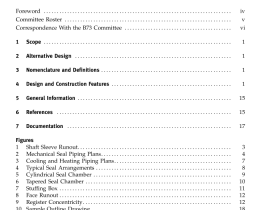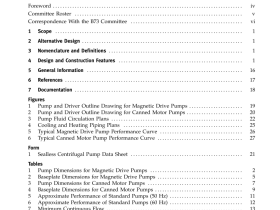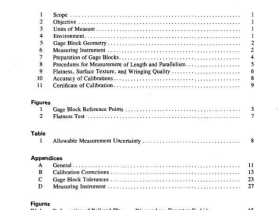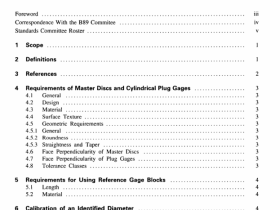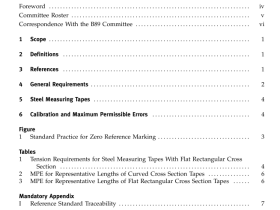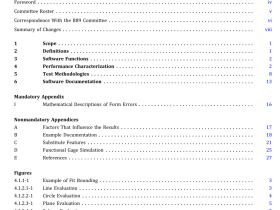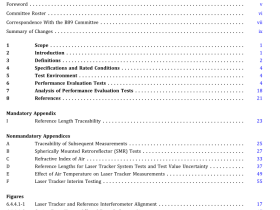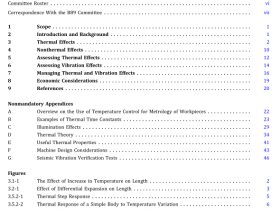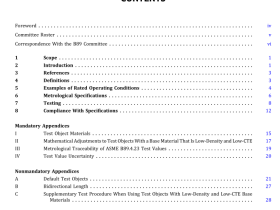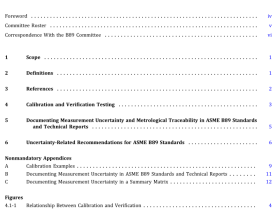ASME B18-16M pdf download
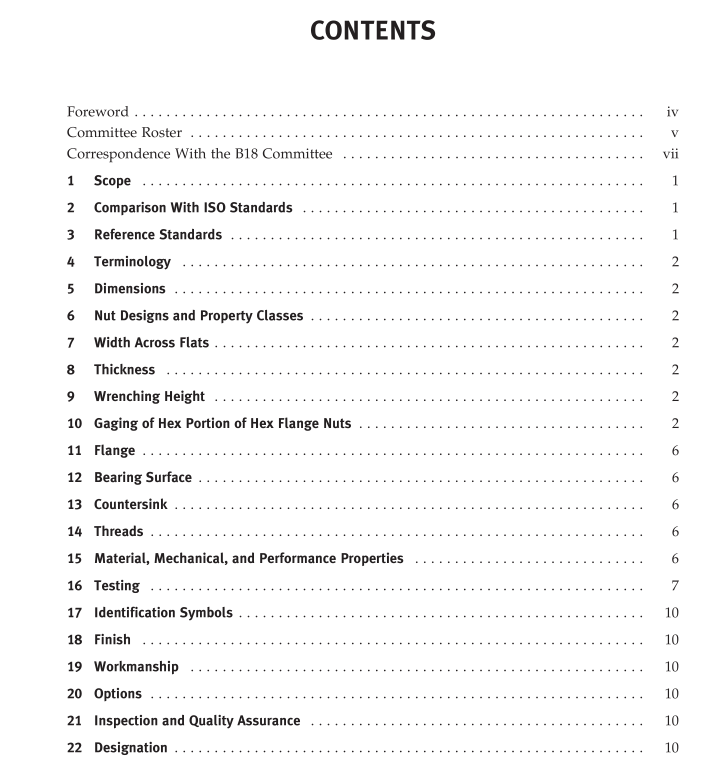
ASME B18-16M pdf download Prevailing- Torque Type Steel Metric Hex Nuts and Hex Flange Nuts Revision and Consolidation of ASME B18.16.1M, B18.16.2M, and B18.16.3M
4 TERMINOLOGY
For definitions of terms relating to fasteners or com- ponent features thereof used in this Standard, refer to ASME B18.12. Unless otherwise noted, all references to nuts in this Standard mean prevailing-torque hex nuts and hex flange nuts.
5 DIMENSIONS
Unless otherwise stated, all dimensions in this Stan- dard are in millimeters (mm), and apply before any plat- ing or coating. When a plating or coating is specified, the finished product dimensions shall be as agreed upon between supplier and purchaser. Symbols specifying geometric characteristics are in accord with ASME Y14.5M.
6 NUT DESIGNS AND PROPERTY CLASSES
There are three basic designs for prevailing-torque nuts.
(a) all-metal, one-piece construction nuts which derive their prevailing-torque characteristics from controlled distortion of the nut thread and/or body
(b) metal nuts which derive their prevailing-torque characteristics from the addition or fusion of a nonmetallic insert, plug, or patch in their threads
(c) top insert, two-piece construction nuts which derive their prevailing-torque characteristics from an in- sert, usually a full ring of nonmetallic material, located and retained in the nut at its top surface The two nut designs defined in paras. 6(a) and (b) have the same dimensional requirements and are des- ignated “all-metal type” in Tables 1 and 2. Nut design 6(c) is designated “top insert type” in Tables 1 and 2. Property classes 5, 9, and 10 nuts have mechanical and performance properties as specified in Table 3. 7 WIDTH ACROSS FLATS The width across flats shall be the distance, measured perpendicular to the axis of the nut, between two op- posite wrenching flats. The maximum width across flats may be exceeded by 0.05 mm to allow for nut deformation caused by introduction of the prevailing-torque feature.
The width across flats and width across corners may be less than the specified minimum in the deformed portion of the nut containing the prevailing-torque fea- ture. At maximum material condition the axis of the hexa- gon shall be located at true position with respect to the axis of the thread pitch diameter within a tolerance zone having a diameter equivalent to 4% of the maximum width across flats.
8 THICKNESS
The nut thickness shall be the overall distance, measured parallel to the axis of the nut, from the top of the nut to the bearing surface of hex nuts, and to the plane of the bearing circle diameter of hex flange nuts. Raised identification markings, if present, shall be excluded.
9 WRENCHING HEIGHT
The wrenching height is the distance, measured at a corner of the hex, from the bearing surface of hex nuts, and from the junction of the hex portion with the flange of hex flange nuts to the last plane of full formed hex, i.e., the plane perpendicular to the nut axis that is closest to the top of the nut and at which the width across corners is within its specified limits. Wrenching height for hex nuts is dimension M 1 in Table 1, and is subject to measurement. Wrenching height for hex flange nuts is dimension T a in Table 2 and is controlled by the gag- ing requirement specified in para. 10.
10 GAGING OF HEX PORTION OF HEX FLANGE NUTS
The nut shall be gaged using two plain ring gages, A and B, to demonstrate the coincidental acceptability of hex height, wrenching height, and width across corners. (See figure above Table 2.) Gage A shall be placed over the hex and shall seat on the flange. Gage B shall be placed on the top of the nut normal to the nut axis. The two gages shall not be in contact.
NOTE: The minimum inside diameter of Gage A equals the max- imum width across corners; the maximum inside diameter of Gage B equals the minimum width across corners minus 0.01 mm; the maximum thickness of Gage A was computed to be equal to or greater than the wrenching height necessary to provide sufficient driveability to develop two times the torsional strength of the properly mated, externally threaded component.
